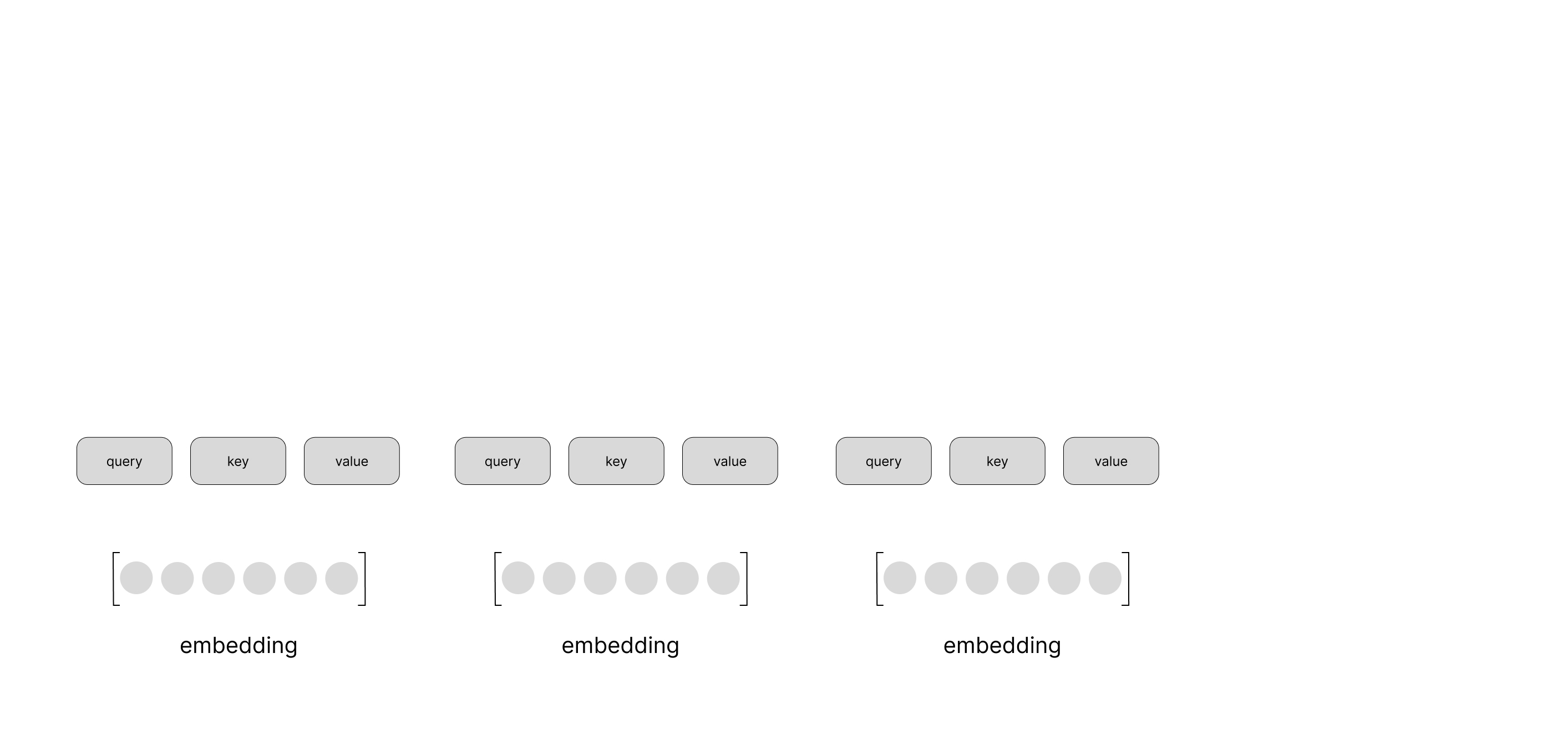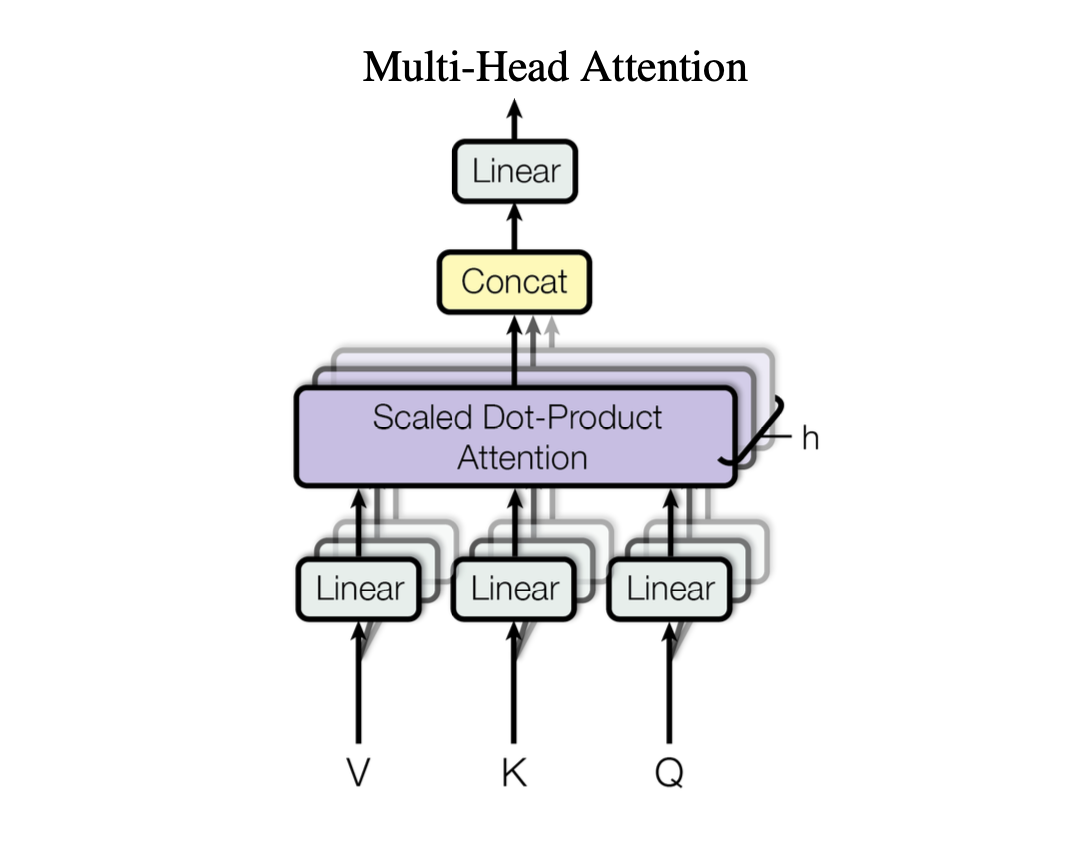Detalhes do funcionamento na lousa
Self-Attention
onde:
- Cada palavra cria uma query e recebe keys e values das demais palavras.
- Dot product
- Os values são então somados ponderadamente, produzindo uma representação que leva em conta todas as palavras relevantes.

Mecanismo self-attention. Fonte:Jeremy Jordan.
Self-Attention
| Elemento | Intuição | Como aparece na prática? |
|---|---|---|
| Queries (Q) | Pergunta: Cada palavra da frase está “fazendo uma pergunta” sobre quais outras palavras ela quer saber. | Vetor que representa a própria palavra, gerado por multiplicação do embedding pela matriz |
| Keys (K) | Chaves de um armário: As demais palavras têm “chaves” que podem ser comparadas com as perguntas. Se uma chave for semelhante à pergunta, ela “abre” a porta para a informação relevante. | Vetor gerado pela mesma palavra, mas usando |
| Values (V) | Conteúdo guardado nas portas: Quando a porta abre, o que vem dentro é a informação que a palavra quer transmitir à pergunta. | Vetor resultante da multiplicação do embedding por |
Analogia com o YouTube
- Query (Q): o vídeo que você está assistindo agora funciona como a "pergunta". Ele pede informações sobre quais outros vídeos podem ser relevantes.
- Key (K): Cada vídeo em sua lista de recomendações tem um “título + descrição” que atua como uma chave; o algoritmo compara essa chave com a pergunta para ver quão semelhante é.
- Value (V): Quando a chave corresponde, o valor é o próprio vídeo (ou seu link). Ele contém tudo o que você recebe: título, thumbnail, descrição, etc.
Resumo e Próximos Passos
- Objetivo: Permitir que cada token acesse e combine informação de todas as posições da sequência simultaneamente.
- Queries (Q): Vetores “perguntas” gerados a partir do próprio token.
- Keys (K): Vetores “chaves” que representam o conteúdo de cada token na mesma sequência.
- Values (V): Vetores contendo a informação real que será combinada.
- Próximos Passos: Compreender Multi‑Head Attention

Multi-Head Attention. Fonte: Jeremy Jordan.